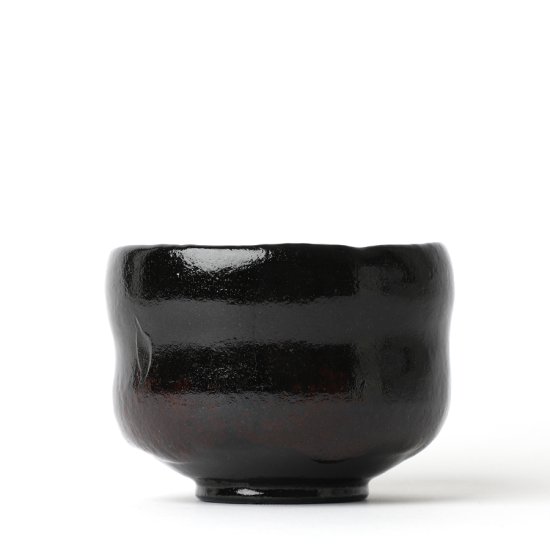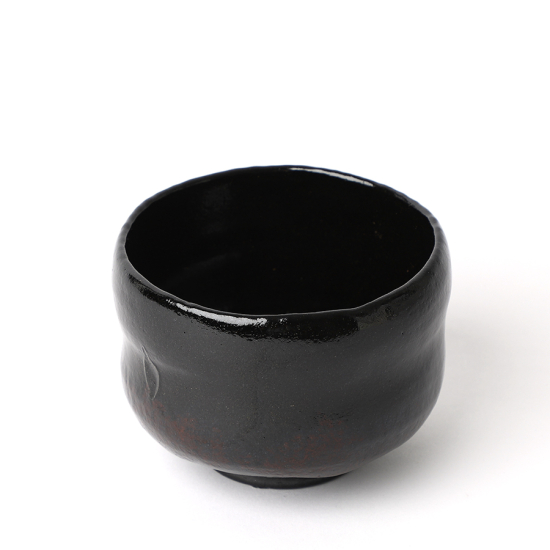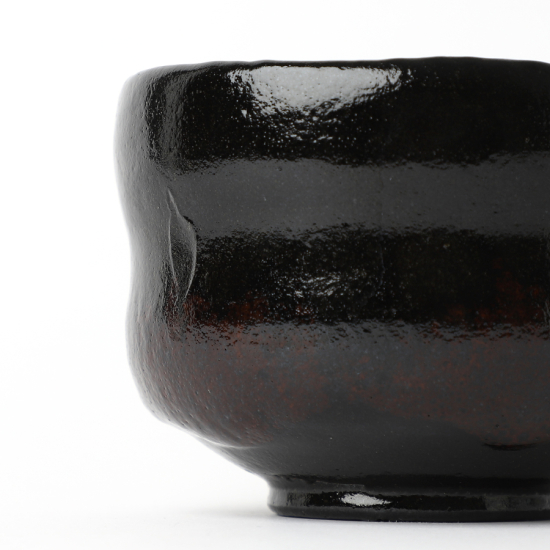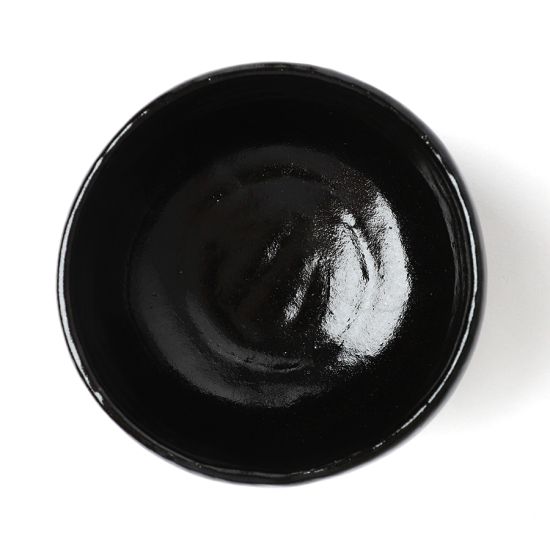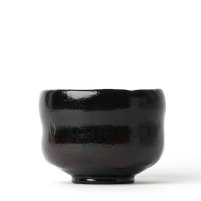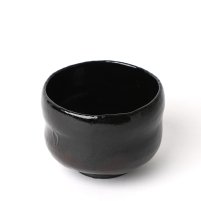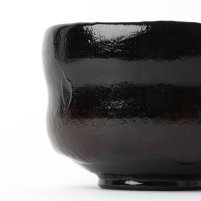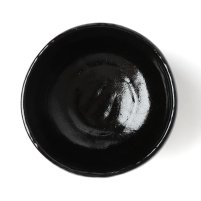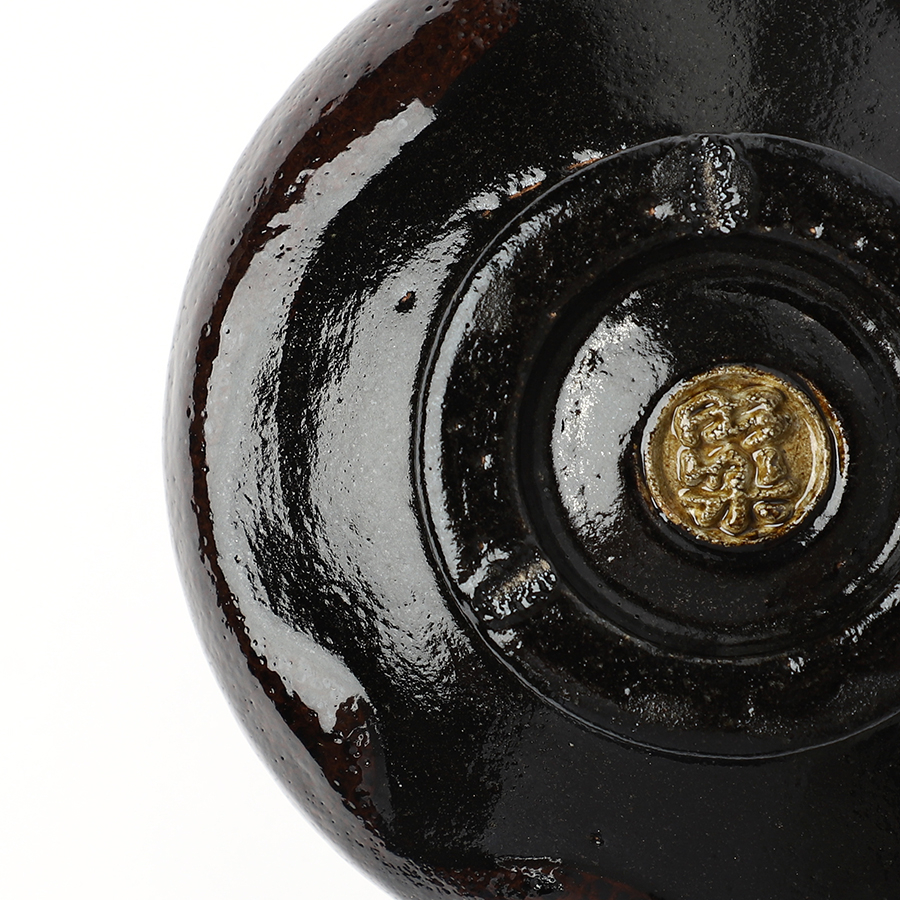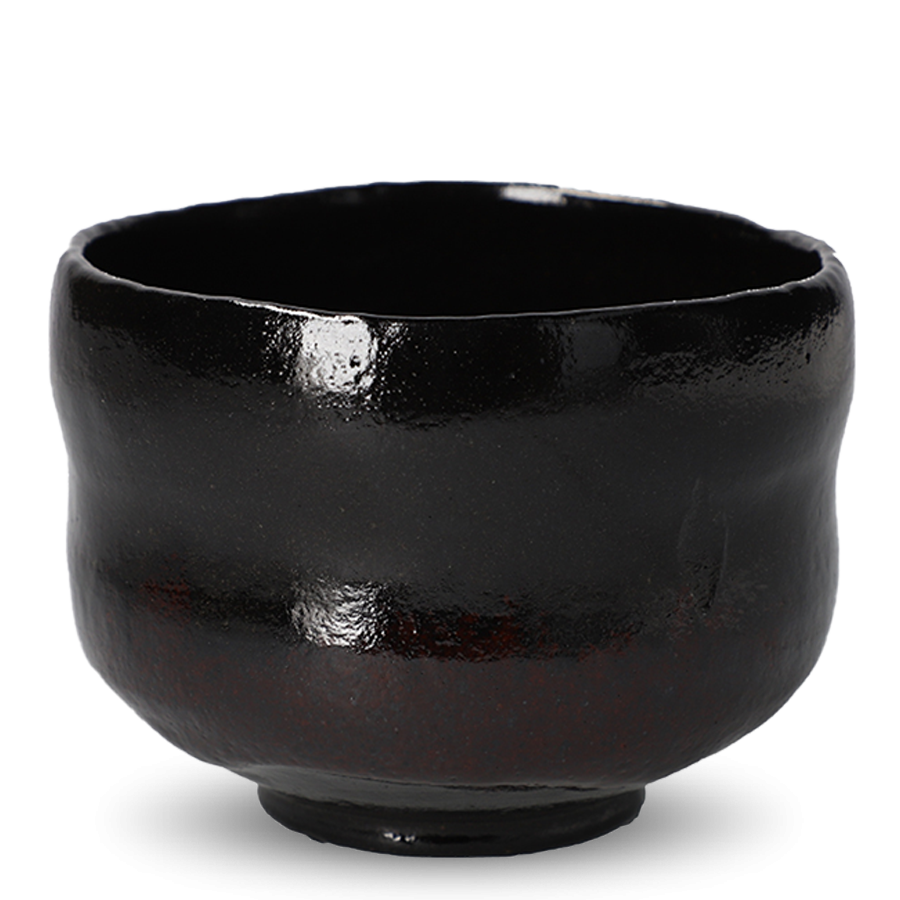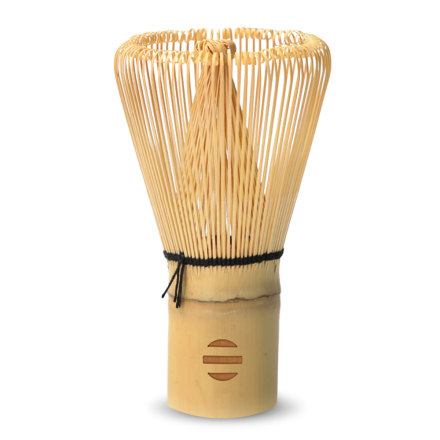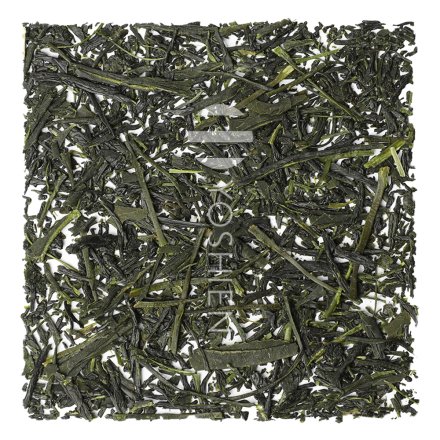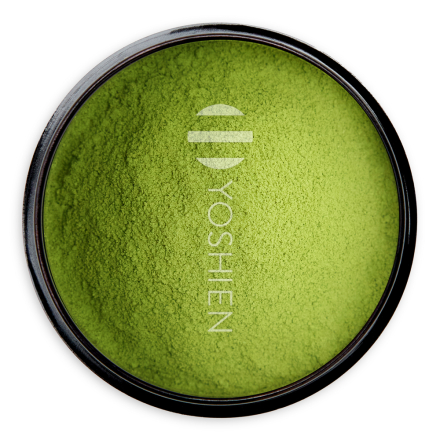Raku Yaki 楽焼
Almost exclusively used for tea ceremonies, Raku is a special type of hand-moulded pottery that is quick-fired at low temperatures then rapidly cooled in air or water to give it its characteristic soft, warm texture. The Raku bowl was developed in the 16th century by the foremost Japanese tea master, Sen no Rikyu, in collaboration with Tanaka Chojiro, a Kyoto-based tile-maker and founding father of the Raku family of potters. Designed to reflect the sobriety of the Wabi aesthetic championed by Rikyu, Raku bowls were originally produced, without ornament, in black or red – colours believed to bring out the vibrant green of Matcha most beautifully.
Kuro Raku 黒楽
Black or Kuro Raku tea bowls are coated in an opaque glaze traditionally made from powdered Kamogawa-ishi: stones from Kyoto’s Kamo river, rich in iron and manganese. After applying several layers of glaze, the bowl is fired at around 1200°C for 5 to 10 minutes. The red hot bowl is then removed from the kiln with tongs – which often leave small marks on the bowl’s surface – and cooled in air or water.



